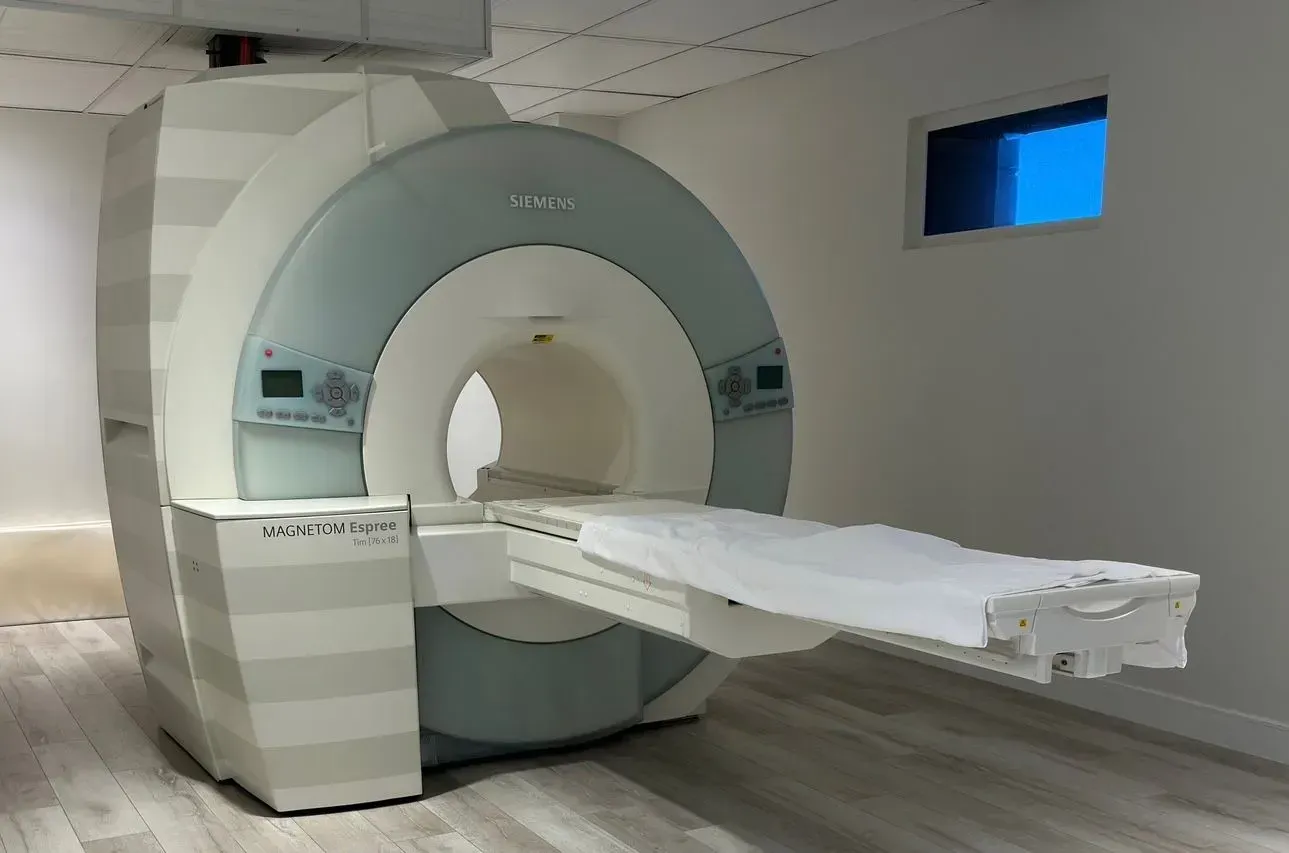MRI - Magnetic Resonance Imaging
American College of Radiology (ACR) Accredited
Magnetic Resonance Imaging (MRI) is an efficient, comfortable outpatient procedure which gives us information to better evaluate your condition. MR imaging produces detailed pictures by using a magnetic field, radio waves and sophisticated computer processing. Magnetic resonance (MR) imaging is now the preferred method for assessing many parts of the body, including the brain, joints and spine.
This page answers most questions about MRI's. If you have any questions please contact us.
This page answers most questions about MRI's. If you have any questions please contact us.
How MR imaging works
- With MR imaging, the body is placed in the magnetic field of the MR machine. Radio waves are then directed to the portion of the body being studied.
- The MR computer reads the radio waves leaving the body and processes them into digital picture form (images). The images are recorded on film to become part of your medical record.
- These pictures are then analyzed by one of the radiologists at our center and sent, along with a written report, to your physician.
Precautions
There are several circumstances under which MR imaging should not be done, and there are precautions which must be observed in other cases.Before your examination, you will be asked whether or not you have any of the following:
Cardiac Pacemaker, Defibrillator, Cerebral aneurysm clips, insulin pump, cochlear implants, neurostimulator, metal in the eyes, if you are currently pregnant
Preparing for the exam
- No advance preparation is required.
- Eat normally and take any medication as usual, unless your doctor has given you other instructions.
- Because we use a large magnet in the MRI, no metallic objects or mechanical devices can enter the imaging room. You may want to keep this in mind when deciding what to wear to your MRI appointment.
Below is a list of suggestions to help you prepare.
- Clothing:
Wear something light weight and comfortable that is easy to take on and off. Avoid wearing clothing that has a lot of metal snaps, zippers or hooks.
- Dental devices:
If you wear dentures, or partial dental plates, they must be removed.
- Hair products:
Many hair products, such as "Topik" to cover hair loss, or attachable hair weaves contain magnetic particles, and they must be removed.
- Hair accessories:
Any hair clips, ties, or pins that are made of metal or have metal parts on them must be removed.
- Jewelry:
All metal jewelry and watches must be removed.
- Make-up:
Because some make up, particularly mascara, is made with a metallic base, it is best not to wear much make up the day of your appointment.
- Medication & diet:
You may continue to take any routine medications prescribed by your physician and there are no dietary restrictions unless you are scheduled to receive medication for claustrophobia, pain, or general anesthesia.
Special considerations
Because we use a strong magnet in the MRI, patients who have pacemakers cannot have an MRI exam. You will be asked to complete an MRI Patient Screening form prior to your exam.Additional information or testing may be needed prior to your MRI exam to ensure that it is safe for you to have this test:
- If you have any other implanted medical devices such as cochlear implants, penile implants, aneurysm clips, artificial heart valves, or recent cardiac stent
- or if you have metal shavings or gunshot shrapnel in the face or eye.
What to expect during the examination
- You will be asked to remove jewelry, your watch, credit cards, dentures, hearing aids and any metal objects which could be affected by the magnetic field. In addition, you will be asked to change into comfortable clothing that we will provide for the examination.
- In the imaging room, you will be positioned on a softly padded table which will be moved into the MR machine by the technologist.
- Depending on the part of your body which is being studied, a small device (coil) will be placed over or underneath you. This is not constricting, and it acts as a receiver for the radio waves produced by the MR machine.
- If only a single part of your body (for example, your head, back or knee) is being studied, the examination usually takes 30-45 minutes. You will hear a rhythmic thumping noise and may feel a slight vibration, but there should be no other physical sensations.
- Throughout your exam, you will be able to hear and speak to your technologist. While the space in the MR machine is adequate for most individuals, some people may feel uncomfortable in it. If you have problems in confined areas or claustrophobic, please call us in advance to talk about this.
- Occasionally a patient will need a moderate sedative to be comfortable in the MR machine. Your referring physician will give you a prescription with instructions on how to take it. You will need to make arrangements for someone to drive you to our facility and back home.
- Your job during the examination is simply to relax and not move. The quality of your MR study depends very much on your ability to hold still. Just like a picture photograph, the medical image will blur if you move.

